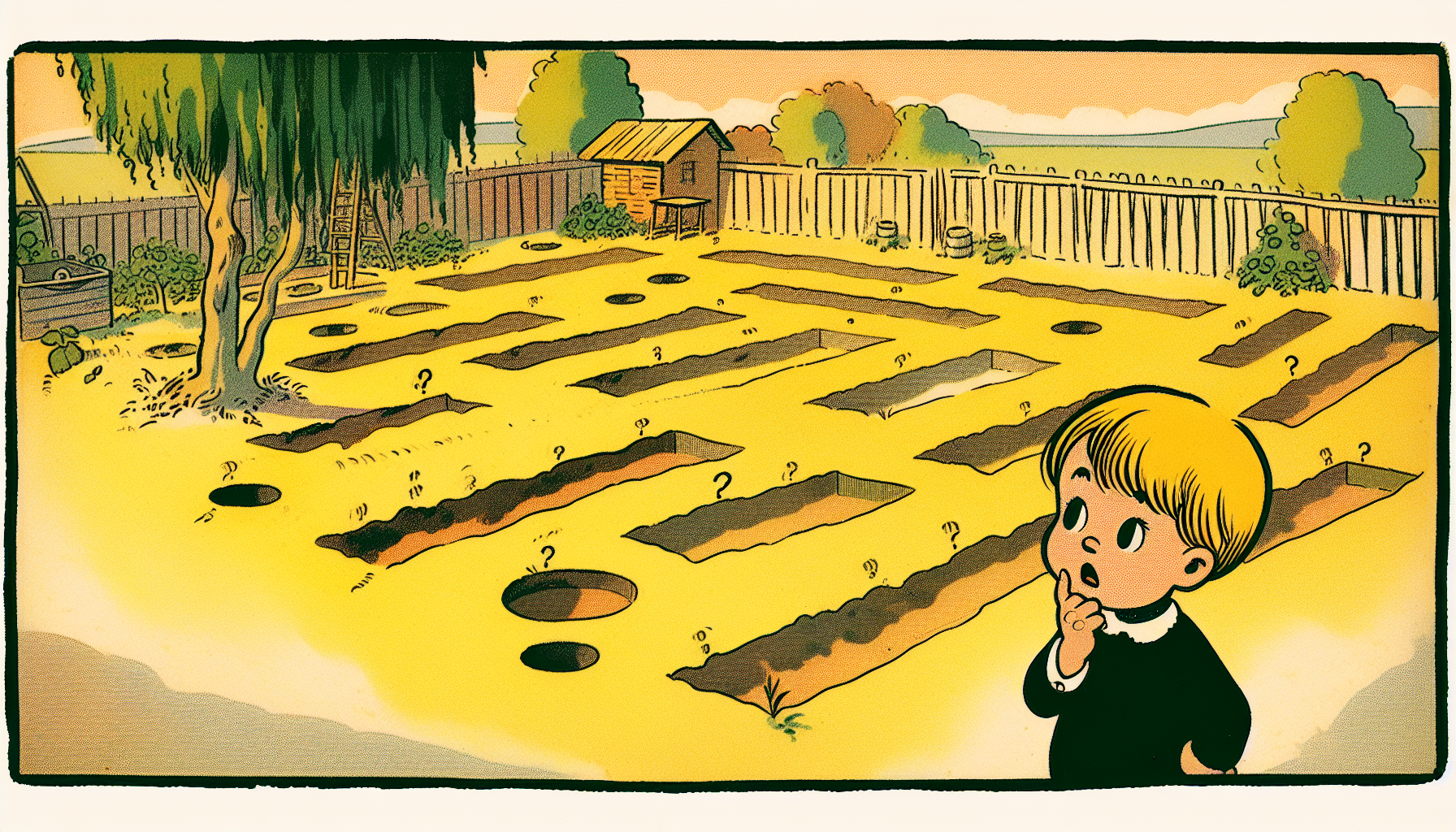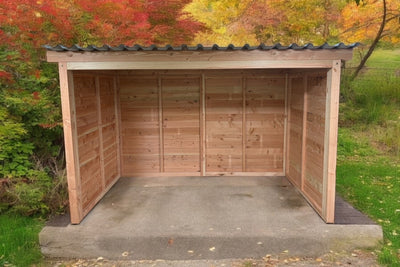Fruit trees for Swiss gardens: Robust, tasty and sustainable planting
In Switzerland, fruit trees in your own garden are much more than just ornamental plants - they stand for healthy nutrition, biodiversity and self-sufficiency. For families with children in particular, small orchards are ideal places to experience and learn. But many garden owners ask themselves: Which fruit trees are suitable for the Swiss climate? Which varieties are particularly robust and are also suitable for smaller gardens or raised beds?
This article provides you with a practical overview of the best fruit tree varieties for different regions of Switzerland. You will find out which trees thrive in which locations, what you should look out for when choosing for family gardens and how to avoid classic care mistakes. Whether it's a sunny hillside garden in Ticino, a sheltered city garden in Zurich or a family garden in the Bernese Mittelland - the following tips will help you get the best out of your garden in the long term.
Suitable fruit trees for the Swiss climate

Switzerland has very different climate zones - from alpine altitudes to milder wine-growing regions. This diversity requires a selection of fruit trees suited to the location in order to avoid frost damage, drought stress or crop failure. Sun exposure, soil type and altitude are decisive factors.
Proven fruit tree species in Switzerland
The following species with robust varieties are particularly suitable for Swiss gardens:
- Apple tree (Malus domestica): Versatile, easy to care for and hardy. Varieties such as 'Gravensteiner', 'Topaz' and 'Boskoop' are widespread in Switzerland and produce good yields even in mixed climates.
- Pear tree (Pyrus communis): Requires well-drained soil and sun. 'Conference' and 'Gute Luise' are considered weather-resistant and bear regularly.
- Cherry (Prunus avium, Prunus cerasus): Demanding, but rewarding. 'Burlat' or 'Schneiders Späte Knorpelkirsche' are popular for private gardens.
- Plum & damson (Prunus domestica): Good choice for the foothills of the Alps and high altitudes. Proven varieties: 'Hauszwetschge' and 'Fellenberg'.
- Quince (Cydonia oblonga): Easy to care for, drought tolerant and particularly suitable for natural gardens.
For smaller gardens, columnar forms, espalier fruit or grafted low trunks on low-growing rootstocks such as M9 (apple) are recommended. They require little space and can be easily integrated into raised beds or urban gardens.
Optimal variety selection according to Swiss regions
The right choice of fruit tree depends heavily on regional conditions. Here are some tried and tested recommendations:
- Mittelland & Unterland: Favorable conditions for almost all species. Pay attention to late-flowering apple and pear varieties due to the risk of late frost.
- Alpine regions & locations above 900 m above sea level: Short growing seasons require robust, early-ripening varieties such as plums or wild fruit.
- Ticino and Southern Alps: Heat-loving species such as apricots, figs and peaches also thrive here. Protect the location against heat stress.
- City gardens: Higher temperatures in urban locations allow for more sensitive varieties, such as nectarines or columnar sweet cherries.
Tip: Swiss nurseries provide expert advice on selecting varieties and stock plants that are adapted to regional conditions. This will help you avoid surprises after planting.
Optimally plan the location and planting
Even the hardiest fruit tree can only thrive if the location and soil are right. A small garden scan is worthwhile before planting: Where is there enough sun? What is the soil structure like? How much space is available?
Sun exposure and soil conditions
Fruit needs light: at least 6-8 hours of sunshine a day is ideal for fruit formation and flavor. Semi-shaded areas are more suitable for shade fruit or berry trees.
The soil structure is also important:
- Good aeration: Improve compacted soil with compost and sand.
- Water drainage: Drainage on slopes or raised beds in depressions help to prevent waterlogging.
- Neutral pH value (6.0-7.5): A soil analysis will give you clarity. Advice centers in the canton can help.
Before planting, loosen the soil deeply, remove root weeds and work in organic material (e.g. well-rotted compost). This lays the foundation for healthy development.
Space requirements and spacing guidelines
Fruit can also be easily integrated into smaller Swiss gardens - the decisive factor is the right growth habit:
- High trunks: 10 m spacing required - more suitable for large country gardens.
- Half-stems: 4-5 m spacing is sufficient - ideal for border zones or back gardens.
- Bush trees or espaliers: 2-3 m wide - perfect for fences or facades.
- Columnar fruit and mini shapes: 0.5-1 m space requirement - ideal for terraces or urban raised beds.
Depending on the canton, legal minimum distances from the property boundary apply (generally 4 m for large trees). Check with the municipality before planting.
Making fruit trees family-friendly
A fruit tree in the garden can be a companion for children for many years - from the awakening of spring to the sweet harvest. It is important that the type of tree, location and care are also adapted to child-friendly aspects.
Safety and child-safe design
Children love fruit trees - also as a natural climbing aid. Pay attention to this:
- No thorny trees near the play area - wild roses or sloes are also better placed away from the play area.
- Climbing-friendly shapes: Bush trees with a stable branch structure promote safe climbing.
- No poisonous plants in the immediate vicinity - avoid yew, foxglove or laburnum, for example.
Garden combinations with sweet hedges (berry bushes) and dwarf fruit trees increase accessibility and offer small successes quickly - important for young gardeners to keep at it.
Diversity of varieties and experiences for children
Children respond well to taste, color and quick harvests. These varieties are well received:
- Apples such as 'Gala', 'Redlove' (with red flesh) or 'Elstar' - sweet, crunchy and easy to care for.
- Plums - can be eaten straight from the tree and are great for cakes or dried fruit.
- Sweet cherries - 'Burlat' ripens early and is particularly enjoyable in June.
A tree with its own nameplate creates additional motivation and responsibility. Small tasks such as watering or harvesting encourage a connection to the garden even at pre-school age.
Care and protection for healthy fruit trees
Well-tended fruit trees will thank you with healthy growth and a rich harvest. Even small measures can help prevent diseases and significantly extend the life of the tree.
Water, nutrients and pruning techniques
Young trees in particular need regular watering in the first two years. Ideally, water in the morning or evening - once a week is usually sufficient.
The following applies when fertilizing:
- Spring: incorporate horn shavings, compost or organic slow-release fertilizer.
- After the summer: No more nitrogen - otherwise it promotes leaf growth instead of wood maturity.
Pruning depends on age and growth:
- Formative pruning: In the first few years for a strong, open crown structure.
- Maintenance pruning in late winter: Remove dead wood and crossing shoots.
- Light-permeable crowns promote ventilation and reduce the risk of fungi.
You can find pruning courses at garten.ch or at local gardening associations - a recommended investment, especially for beginners.
Promoting beneficial insects and natural plant protection
Biological measures help to get by without chemicals:
- Prevent apple scab with more resistant varieties and an airy crown shape.
- Spray aphids with water or introduce ladybugs.
- Fruit rot (monilia): Consistently dispose of affected fruit, carry out winter pruning.
Use household remedies such as soft soap spray or neem oil. Collecting rainwater saves resources and protects young plants from limescale formation and waterlogging.
Long-term benefits of fruit trees in the garden
If you plant today, you will reap tomorrow - and perhaps in 30 years' time. Fruit trees are a worthwhile contribution to the environment, education and the household budget.
Sustainability and added value in everyday family life
A fruit tree produces locally, without emissions and without packaging. It also improves the microclimate, promotes biodiversity and makes an active contribution to climate protection in your own garden.
At the same time, it is a great educational tool for children:
- Experience the seasons: From budding to harvest, children can follow the cycle of nature up close.
- Kitchen use: Freezing, preserving or dehydrating fresh fruit strengthens self-sufficiency.
Cost-benefit ratio at a glance
A high-quality young tree from a Swiss nursery costs CHF 35-80. With accessories, the initial costs amount to around CHF 100-150 per planting site. The yield: up to 40 kg of apples per year - retail value around CHF 100 - plus ideal value for health, gardening pleasure and connection to nature.
The bottom line: if you give a tree roots, you are cultivating far more than fruit - you are creating active environmental awareness and valuable family time right on your doorstep.
Conclusion: Fruit trees in the garden - sustainable, family-friendly, Swiss
Fruit trees transform gardens into green oases full of life and benefits. They enrich our everyday lives with healthy food, strengthen our connection to nature and offer children hands-on learning experiences. Especially in Switzerland, with its garden culture and diverse landscape, it is worth investing in suitable fruit varieties.
Whether espalier fruit on the balcony, apple trees for the children or plums on the Jura slope - if you plan well and look after them carefully, you will not only reap fruit, but also joy, knowledge and quality of life.
Start your orchard project now - with a tree, awareness and a grip on the ground!


